
The Birth of a Nation, originally called The Clansman, is a 1915 American silent epic drama film directed by D. W. Griffith and starring Lillian Gish. The screenplay is adapted from Thomas Dixon Jr.'s 1905 novel and play The Clansman. Griffith co-wrote the screenplay with Frank E. Woods and produced the film with Harry Aitken.

Buffalo Soldiers were United States Army regiments that primarily comprised African Americans, formed during the 19th century to serve on the American frontier. On September 21, 1866, the 10th Cavalry Regiment was formed at Fort Leavenworth, Kansas. The nickname "Buffalo Soldiers" was purportedly given to the regiment by Native Americans who fought against them in the American Indian Wars, and the term eventually became synonymous with all of the African American U.S. Army regiments established in 1866, including the 9th Cavalry Regiment, 10th Cavalry Regiment, 24th Infantry Regiment, 25th Infantry Regiment and 38th Infantry Regiment.

Charles Young was an American soldier. He was the third African-American graduate of the United States Military Academy, the first Black U.S. national park superintendent, first Black military attaché, first Black man to achieve the rank of colonel in the United States Army, and highest-ranking black officer in the Regular Army until his death in 1922.
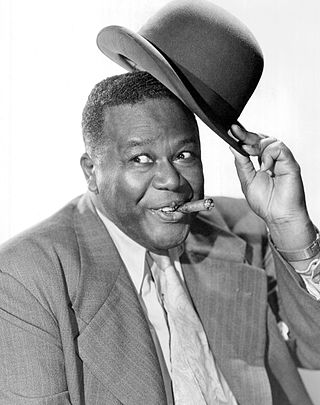
Spencer Williams was an American actor and filmmaker. He portrayed Andy on TV's The Amos 'n' Andy Show and directed films including the 1941 race film The Blood of Jesus. Williams was a pioneering African-American film producer and director.

The 1992 Los Angeles riots, were a series of riots and civil disturbances that occurred in Los Angeles County, California, United States, during April and May 1992. Unrest began in South Central Los Angeles on April 29, after a jury acquitted four officers of the Los Angeles Police Department (LAPD) charged with using excessive force in the arrest and beating of Rodney King. The incident had been videotaped by George Holliday, who was a bystander to the incident, and was heavily broadcast in various news and media outlets.
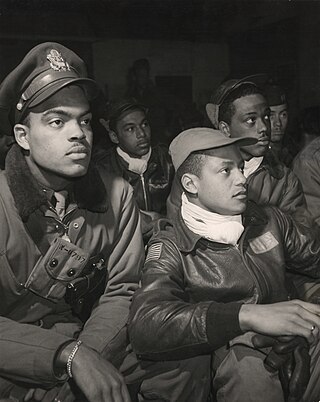
The military history of African Americans spans from the arrival of the first enslaved Africans during the colonial history of the United States to the present day. African Americans have participated in every war fought by or within the United States.

Partus sequitur ventrem was a legal doctrine passed in colonial Virginia in 1662 and other English crown colonies in the Americas which defined the legal status of children born there; the doctrine mandated that children of slave mothers would inherit the legal status of their mothers. As such, children of enslaved women would be born into slavery. The legal doctrine of partus sequitur ventrem was derived from Roman civil law, specifically the portions concerning slavery and personal property (chattels), as well as the common law of personal property.
Kevin Rodney Sullivan is an American film and television actor and film director.

Lerone Bennett Jr. was an African-American scholar, author and social historian who analyzed race relations in the United States. His works included Before the Mayflower (1962) and Forced into Glory (2000), a book about U.S. President Abraham Lincoln.

Madison Hemings was the son of the mixed-race enslaved woman Sally Hemings and, according to most Jefferson scholars, her enslaver, President Thomas Jefferson. He was the third of her four children to survive to adulthood. Born into slavery, according to partus sequitur ventrem, Hemings grew up on Jefferson's Monticello plantation, where his mother was also enslaved. After some light duties as a young boy, Hemings became a carpenter and fine woodwork apprentice at around age 14 and worked in the joiner's shop until he was about 21. He learned to play the violin and was able to earn money by growing cabbages. Jefferson died in 1826, after which Sally Hemings was "given her time" by Jefferson's surviving daughter Martha Jefferson Randolph.

"New Negro" is a term popularized during the Harlem Renaissance implying a more outspoken advocacy of dignity and a refusal to submit quietly to the practices and laws of Jim Crow racial segregation. The term "New Negro" was made popular by Alain LeRoy Locke in his anthology The New Negro.
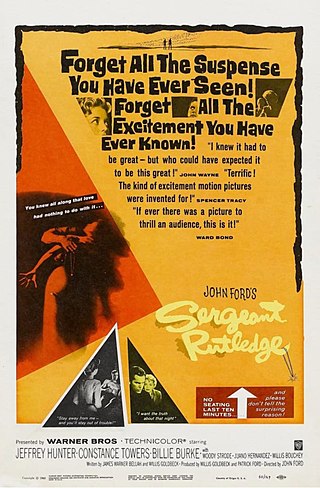
Sergeant Rutledge is a 1960 American Technicolor Western film directed by John Ford and starring Jeffrey Hunter, Constance Towers, Woody Strode and Billie Burke. The title was also used for the novelization published in the same year. Six decades later, the film continues to attract attention because it was one of the first mainstream films in the U.S. to treat racism frankly and to give a starring role to an African-American actor. In 2017 critic Richard Brody observed that "The greatest American political filmmaker, John Ford, relentlessly dramatized, in his Westerns, the mental and historical distortions arising from the country’s violent origins—including its legacy of racism, which he confronted throughout his career, nowhere more radically than in Sergeant Rutledge."
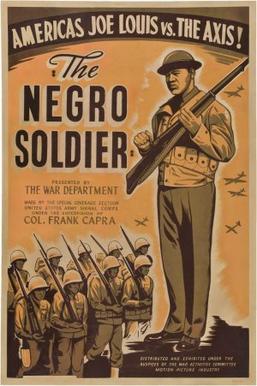
The Negro Soldier is a 1944 documentary film created by the United States Army during World War II. It was produced by Frank Capra as a follow-up to his successful film series Why We Fight. The army used the film as propaganda to convince black Americans to enlist in the army and fight in the war. Most people regarded the film very highly, some going as far as to say that The Negro Soldier was "one of the finest things that ever happened to America". Due to both high reviews and great cinematography, The Negro Soldier proved to be a breakout film influencing army members and civilians of all races. In 2011, it was chosen to be preserved in the National Film Registry of the Library of Congress.

The Flying Ace is a 1926 black-and-white silent drama film directed by Richard E. Norman with an all-African-American cast. This six-reel film, made by Norman Studios in Jacksonville, Florida, utilized a mix of professionals such as leads Laurence Criner and Kathryn Boyd, and non-professional actors.
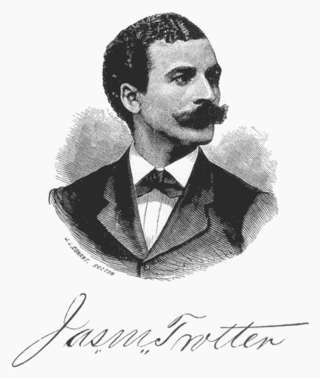
James Monroe Trotter was an American teacher, soldier, employee of the United States Post Office Department, a music historian, and Recorder of Deeds in Washington, D.C. Born into slavery in Mississippi, he, his two sisters and their mother Letitia were freed by their master, the child's father, and helped to move to Cincinnati, Ohio. He grew up in freedom, attending school and becoming a teacher.

The Charles Young Buffalo Soldiers National Monument, a National Monument of the United States, commemorates the life of Charles Young (1864-1922), an escaped slave who rose to become a Buffalo Soldier in the United States Army and its first African-American colonel. It is located on United States Route 42 in Wilberforce, Ohio, in a house purchased by Young in 1907 that was designated a National Historic Landmark in 1974. The monument is administered by the National Park Service; the house is open by appointment for tours.
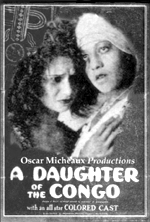
A Daughter of the Congo is a 1930 race film directed, written and produced by Oscar Micheaux. The film is loosely based on the novel The American Cavalryman (1917), by African-American novelist and playwright Henry Francis Downing. It is considered a lost film.
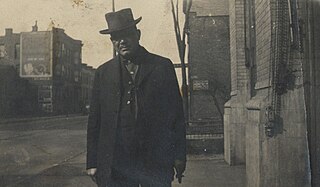
William D. Foster, sometimes referred to as Bill Foster, was a pioneering African-American film producer who was an influential figure in the Black film industry in the early 20th century, along with others such as Oscar Micheaux. He was the first African American to found a film production company, establishing the Foster Photoplay Company in Chicago in 1910. Foster had a vision for the African-American community to portray themselves as they wanted to be seen, not as someone else depicted them. He was influenced by the black theater community and wanted to break the racial stereotyping of blacks in film. He was an actor and writer under the stage name Juli Jones, as well as an agent for numerous vaudeville stars. His film The Railroad Porter, released in 1912, is credited as being the world's first film with an entirely black cast and director. The film is also credited with being the first black newsreel, featuring images of a YMCA parade. Foster's company produced four films that were silent shorts.

African American cinema is loosely classified as films made by, for, or about Black Americans. Historically, African American films have been made with African-American casts and marketed to African-American audiences. The production team and director were sometimes also African American. More recently, Black films featuring multicultural casts aimed at multicultural audiences have also included American Blackness as an essential aspect of the storyline.
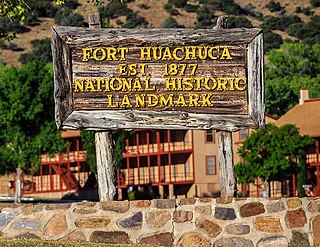
This is a list with images of some of the historic structures and places in the Fort Huachuca National Historic District in Arizona. The district, also known as Old Fort Huachuca, is located within Fort Huachuca an active United States Army installation under the command of the United States Army Installation Management Command. The fort sits at the base of the Huachuca Mountains four miles west of the town of Sierra Vista, on AZ 90 in Cochise County, Arizona.



















